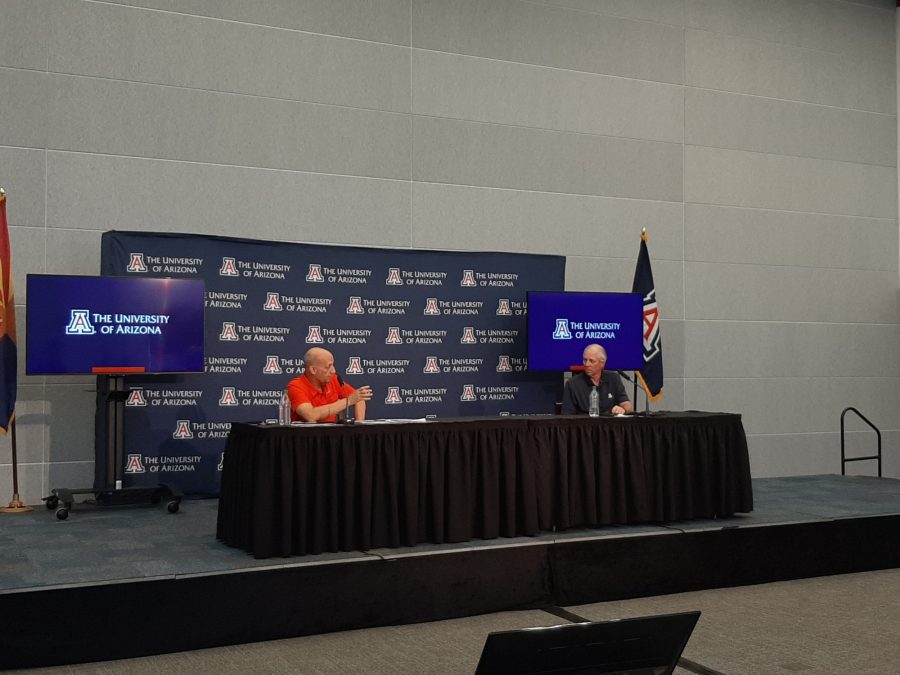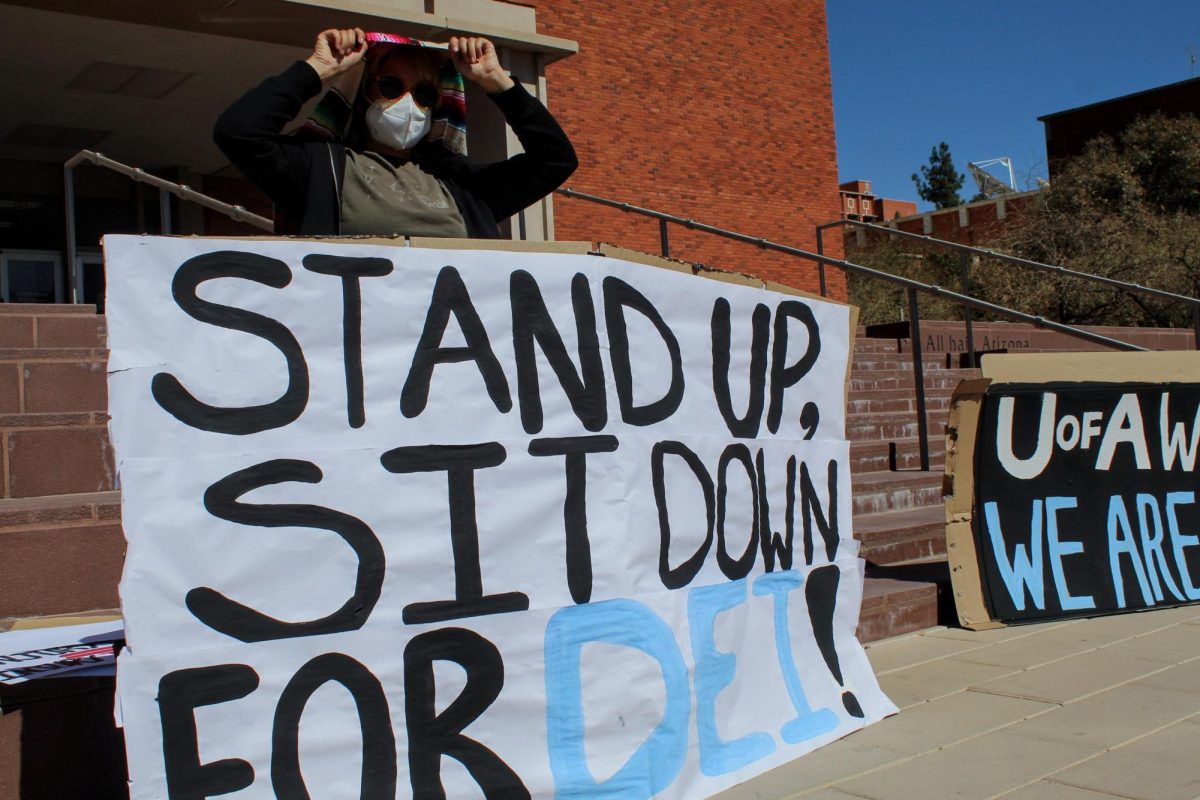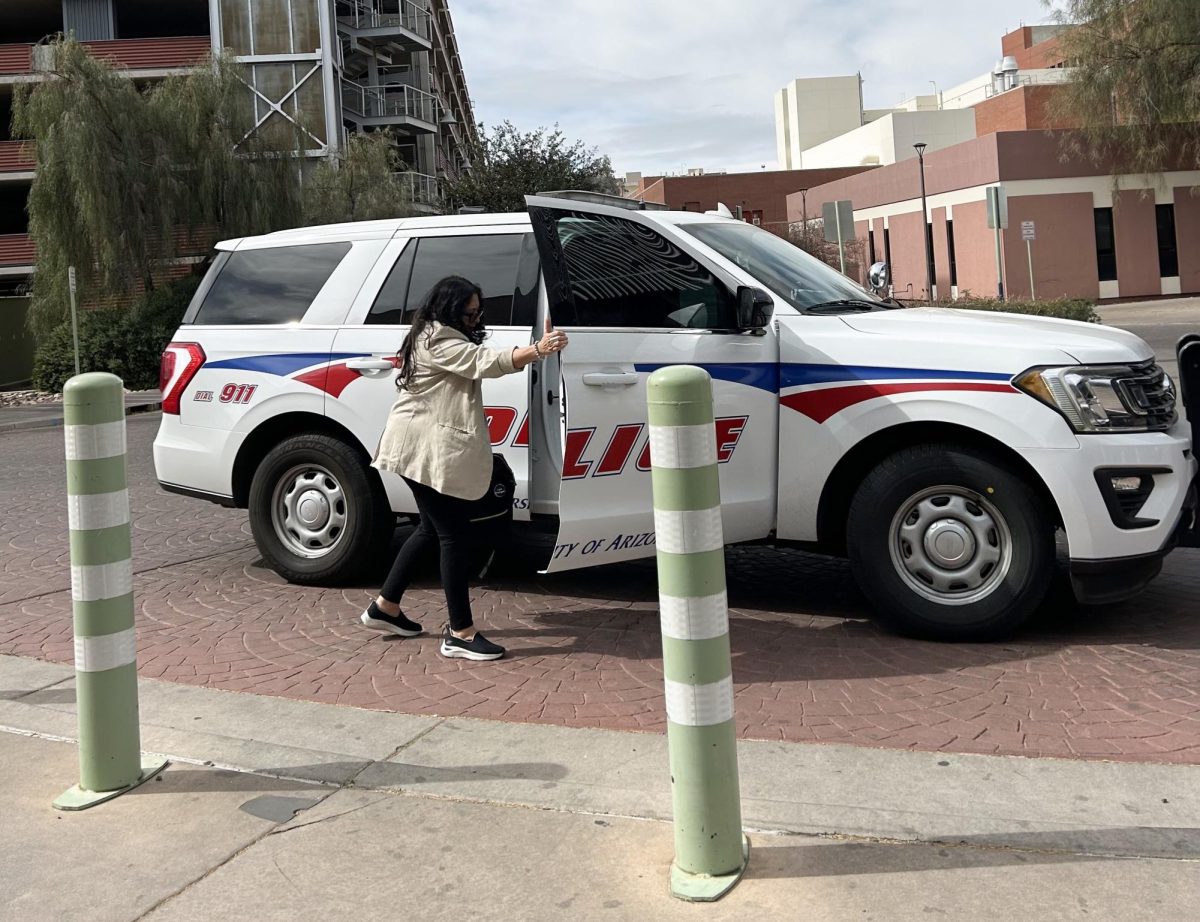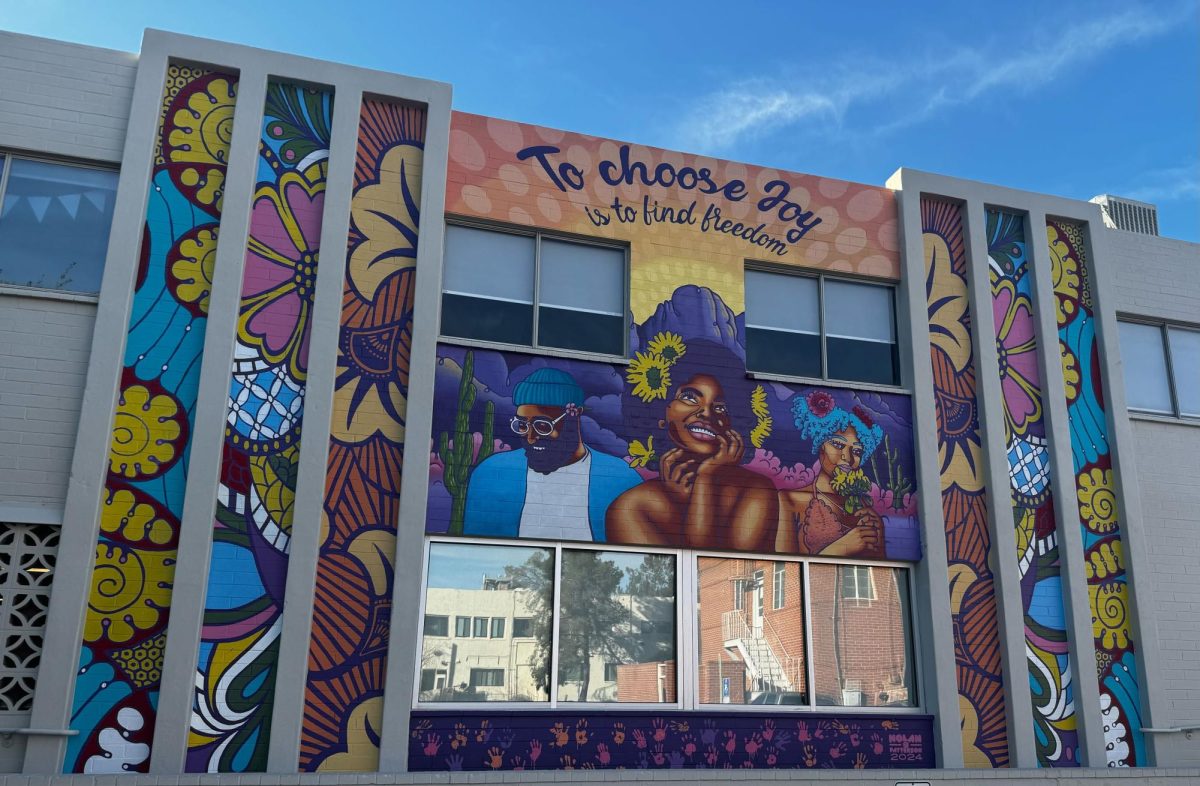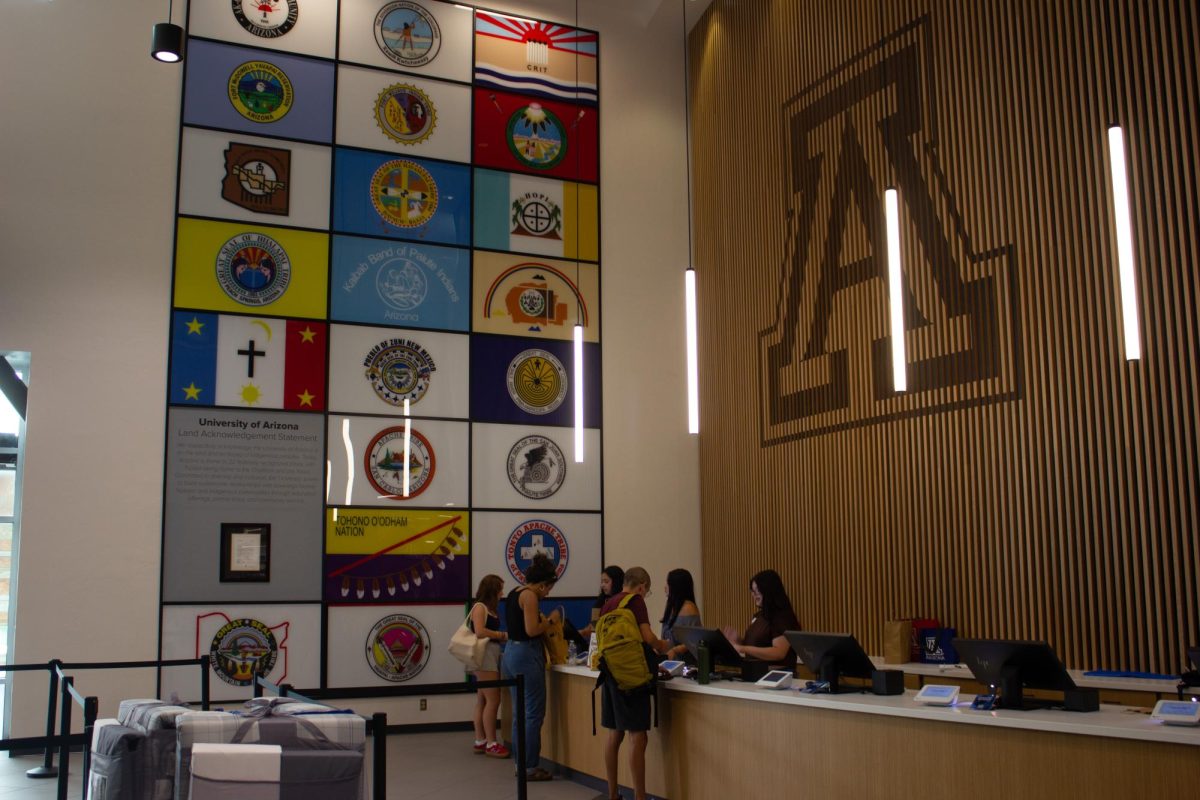University of Arizona President Dr. Robert C. Robbins and Reentry Task Force Director Dr. Richard Carmona spoke Thursday on the increase of COVID-19 cases in Arizona and how that will factor in the decision of whether or not to open the university campus.
The stats
Daily, Reentry Task Force members are given a situation report detailing any updates on the COVID-19 pandemic. The daily briefings were described in more detail at the June 11 press conference.
Robbins presented a brief slideshow of current nationwide, statewide and local COVID-19 statistics he said the UA is monitoring to determine whether campus reentry is feasible.
When Robbins first announced the university’s intention to return to in-person sessions this fall, Arizona had some of the lowest coronavirus cases in the country. That no longer is the case.
“When you called me months ago to ask my opinion, we were being heralded as a state with almost no cases,” Carmona said. “The challenge we see now is that the data is going in the wrong way.”
RELATED: CDC director Redfield says cases of COVID-19 may be ten times higher than reported
Currently, the U.S. leads the world in number of cases, with 2.3 million total and about 121,000 cases resulting in death. Arizona has reported almost 60,000 cases total and about 1,400 cases resulting in death.
Maricopa County still leads the state in number of cases at about 35,000, whereas Pima County comes in second at a little over 6,000 cases. However, the death rate in Pima County is significantly higher, with 24.4 deaths per 100,000 cases as opposed to Maricopa’s 15.8 deaths per 100,000 cases, according to Robbins.
Broken down by age group, the greatest number of COVID-19 cases in Pima County are from people age 20 to 44.
“Now, that’s a large distribution of ages,” Robbins said, stating the university is working on breaking down that information into smaller age groups. “But this got my attention, especially since this is primarily the demographic of individuals that would be coming back to the campus if we chose to reopen.”
However, the importance of pandemic statistics stretches beyond Arizona’s borders, according to Robbins.
“We’re keeping an eye on all states because we get students from all states … and most countries around the world,” Robbins said.
In addition to raw numbers of positive cases, Robbins said the university is also watching the percentage of ICU beds in use. As of now, 88% of Arizona’s ICU beds are in use.
“We’re nearing crisis levels of hospital utilization,” Robbins said. “The number of cases are one thing, but the number of cases of individuals getting sick enough to have to go into the hospital and then utilize and ICU bed is something that I think is very, very important and we should keep our eye on, which we are doing.”
Finally, Robbins emphasized that should the campus reopen, all those on the campus need to diligently follow CDC guidelines, including wearing a mask, continuing to social distance, staying home if one is experiencing symptoms and washing one’s hands.
“Wash your hands longer than most people, I would suggest,” Robbins said.
Signs with these and other general CDC guidelines will be posted around campus, according to Robbins.
Although the university is still planning on reopening this fall, based on the current number of coronavirus cases and the percentage of ICU beds in use, Robbins said “if I had to say today, would we open? No.”
Policy updates and clarifications
The UA recently announced that should campus reopen for fall 2020, all classes will be conducted fully online following Thanksgiving break, including all final exams, so those traveling home for the holiday can remain home through the winter break. However, there had been questions on whether that meant students would not be allowed to return to campus at all or if staying home was merely an option.
At the press conference, Robbins clarified, “just like [spring], if students don’t have anywhere else to go, no other place to stay, we would keep the dorms open.”
Additionally, Provost Liesl Folks, who was in attendance but did not speak at the conference herself, provided some more detail into how courses would function should the campus continue into fall with fully online sessions.
“Even how will we open and what will online instruction look like is not a clear answer,” Folks said.
Folks identified the closure of K-12 schools in Arizona as a major inhibitor on instructors’ ability “to deliver synchronous online, so what we are calling ‘live online,’” Folks said.
She did say there will be some courses that will certainly be taught in-person come fall “no matter what.”
“We have many programs – academic programs – where there’s no choice for an online mode,” Folks said, referencing clinical rotations, required labs and performance-based majors. “We know that we’re going to have some face-to-face instruction.”
Folks said the university is working on ways to ensure graduation would not be delayed for some students due to COVID-19. She said this involves looking into course prerequisites and post-requisites to see if the course order could be rearranged if a student was not able to come back for in-person sessions this fall.
However, she said some degree programs just may not be viable for some students based on their own health conditions, but she said she it trying to figure out ways to help those students.
“Imagine we get to a vaccine, but the vaccine works like the flue vaccine and it’s 50% effective every year. Where does that leave people who have chosen a degree path that will take them towards a career that depend on face-to-face interaction,” Folks said. “So we’re just working through now with our advisement team how will we support students through making those decisions and making them in a manner that helps them get finished with something – any degree – in a really timely way if they have to change direction.”
Additionally, Folks spoke more on Babcock Residence Hall, which will not be open for residents and will instead serve as an infirmary for students living one campus who test positive for COVID-19 and need some medical care.
Most young people who do not have any preexisting health conditions are not in danger of severe complications due to coronavirus and instead just feel as though they have the flu. Babcock would be a place where one could self-isolate while also receiving non-intensive medical care.
“Students can stay up with their work, they can do telemedicine with Campus Health, … we can get meals to them really easily because we just come to their door and deliver food,” Folks said. “It’s like … you’re in your bedroom and somebody’s going to bring you chicken soup because you feel miserable.”
Folks made it clear the care in Babcock would not replace hospitalization if that were necessary, but it would just provide students “a little extra TLC.”
General Faculty vote to delay UA furlough plan
General Faculty met virtually Thursday at 2 p.m. to vote on delaying the UA’s current furlough plan, which will be officially put into place July 1. While the vote itself cannot force administration to postpone the plan’s implementation, it would serve as an official faculty recommendation.
Robbins said he will watch for the vote’s results and they will put out a statement about the vote and the furlough plan in the coming days.
The vote will be announced approximately 24 hours after the general assembly meeting.
To watch the full Reentry Task Force press conference, visit the UA’s YouTube channel.
Follow Sam Burdette on Twitter



